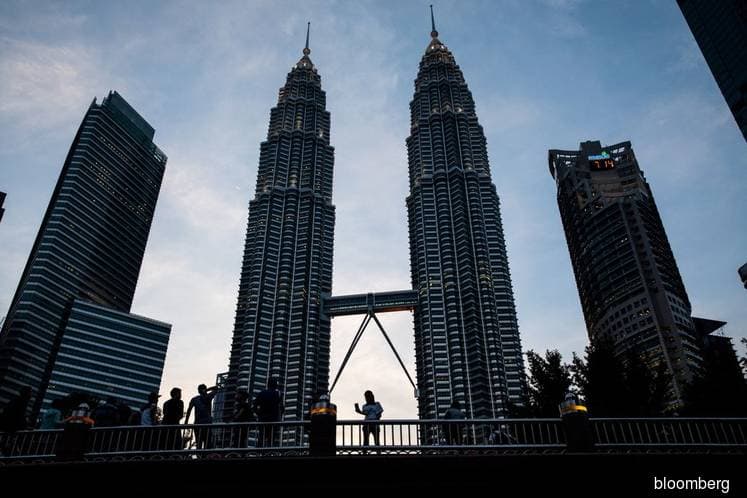
This article first appeared in The Edge Malaysia Weekly on July 30, 2018 - August 5, 2018
IF Petroliam Nasional Bhd (Petronas) is forced to take a huge cut so that oil-producing states can get a bigger royalty, it would lead to a deterioration in its profitability and the annual dividends it pays the federal government.
Last year, Petronas paid the federal government a dividend of RM16 billion or 42.4% of its net profit of RM37.7 billion. That was the lowest dividend paid since 2007 owing to low crude oil prices and the national oil corporation’s need to reinvest in expanding its capacity.
Production-sharing contracts (PSCs), which have been the cornerstone of Petronas’ development, entail a 5% royalty payable to both the federal and state governments from the total production of hydrocarbon resources in a year.
After deducting the royalty, based on the first PSC signed in 1976, Petronas and its contractor-partners will be able to claim a recovery cost of 20% on the exploration, development and production of oilfields. The remaining 70% is shared between Petronas and its partners, according to their contracts.
For example, if the fields in Sarawak produce 100,000 barrels of oil a day, the federal and state governments each get the equivalent value of 5,000 barrels a day. If the prevailing price on that day is US$50 per barrel, that would work out to US$250,000.
The remaining 70,000 barrels (after deducting cost oil, which is oil that can be recovered by contractors to cover their costs) will be shared between Petronas and the contract partners. If there is only one partner, and the share is 70:30 in favour of Petronas, the national oil corporation will get 49,000 barrels worth of oil revenue a day. This works out to US$2.45 million a day of revenue for Petronas.
If the 20% royalty is implemented on production and taken from Petronas’ share of profit oil (the portion that remains after cost oil is deducted), the corporation would only bring home 34,000 barrels a day from the fields, or US$1.7 million in revenue.
This means a drastic drop in Petronas’ revenue and most likely its profitability, which will also affect its ability to pay dividends to the federal government and undertake capital investments to maintain and improve its businesses.
It has also to be noted that over the years, as the exploration, development and production of hydrocarbon resources get more difficult and move into deeper seas, the terms of the PSCs have changed in favour of the foreign oil companies. The cost recovery for oil companies has escalated while Petronas’ share of profit oil has reduced further.
The federal government now depends on petroleum revenue more than ever after the zerorisation of the Goods and Services Tax. The implementation of GST in April 2015 reduced the government’s dependency on black gold.
In 2014, federal government revenue from petroleum income tax, dividends from Petronas and royalty from oil and gas made up 28.3% of total revenue compared with an estimated 13.6% last year, according to the finance ministry.
At the same time, the consumption tax’s contribution to the federal government’s coffers increased to 18.4% last year from 7.8% in 2014.
“Petronas, as a major contributor to federal government revenue, must be allowed to thrive. Besides the revenue generated for the federal government, Petronas has also spent billions of ringgit on social responsibilities and national services,” says an industry observer.
“How can Petronas continue to play its role in the development of the country if it has to foot the bill for higher royalty? The federal and state governments should be wise enough not to turn Petronas into another PDVSA,” he says.
PDVSA, or Petroleos de Venezuela, has been used as the official piggy bank by the Venezuelan government to implement many socialist programmes. Unofficial sources estimate that a total of US$61.4 billion from PDVSA was spent by the Venezuelan government between 2004 and 2010 to fund its socialist programmes.
When crude oil prices were high, Venezuelans enjoyed a high standard of living, funded by petrodollars. However, following the death of former president Hugo Chavez in 2013, and the plunge in crude oil prices, Venezuela has become a failed state.
The bolivar fuertes is set to be replaced with a new currency called bolivar soberano at an exchange rate of one soberano to 100,000 fuerte. This measure was taken as Venezuela’s inflation rate is expected to reach one million per cent by the end of the year, according to the International Monetary Fund.
Meanwhile, PDVSA, which oversees the largest hydrocarbon reserves in the world and was once the fourth largest exporter of crude oil globally, cannot even meet some of its export obligations due to operational and economic problems.
Venezuela’s experience is a sobering lesson for any country.
Save by subscribing to us for your print and/or digital copy.
P/S: The Edge is also available on Apple's AppStore and Androids' Google Play.